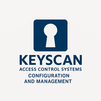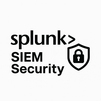.jpg)
The Certified Identity & Access Manager (CIAM) course provides comprehensive training on managing customer and enterprise identities with a focus on security, compliance, and user experience. Participants learn advanced IAM concepts, authentication methods, identity lifecycle, consent management, and integration with modern technologies. The program emphasizes regulatory standards, fraud prevention, and Zero Trust principles, enabling learners to design scalable CIAM solutions and prepare for leadership roles in digital security and access management.
Certified Identity & Access Manager (CIAM) Training Interview Questions Answers - For Intermediate
1. How does Zero Trust relate to IAM?
Zero Trust is a security model that assumes no user or device should be inherently trusted, whether inside or outside the network. IAM plays a central role in Zero Trust by continuously verifying identities, enforcing adaptive authentication, and ensuring access is granted only based on strict contextual policies.
2. What is adaptive authentication in IAM?
Adaptive authentication uses contextual factors such as device type, user behavior, location, and network risk level to determine authentication requirements. It allows organizations to apply stronger verification when risks are high while enabling smoother access in low-risk situations, balancing security and user convenience.
3. Why is auditing important in IAM?
Auditing provides visibility into who accessed what resources, when, and under what conditions. It is essential for detecting suspicious activity, preventing insider threats, and demonstrating compliance with regulations. Audit logs also support forensic investigations after security incidents.
4. How does IAM integrate with cloud services?
IAM integrates with cloud platforms through identity federation, API security, and centralized user provisioning. Cloud IAM solutions often provide connectors to SaaS applications, enabling unified access control, reducing password sprawl, and supporting compliance across hybrid or multi-cloud environments.
5. What are some common IAM protocols?
Common IAM protocols include SAML (Security Assertion Markup Language) for authentication, OAuth 2.0 for authorization, and OpenID Connect (OIDC) for identity federation. These standards ensure secure and interoperable identity management across different applications and platforms.
6. What is the difference between authentication and authorization?
Authentication verifies who a user is by validating credentials such as passwords, tokens, or biometrics. Authorization determines what resources the authenticated user is allowed to access. Both processes work together to ensure secure and appropriate access control.
7. Why is passwordless authentication becoming popular?
Passwordless authentication reduces reliance on traditional passwords, which are often weak and prone to phishing or reuse attacks. Instead, it leverages biometrics, hardware tokens, or mobile push notifications, offering stronger security while improving user experience by eliminating password fatigue.
8. How does IAM help prevent insider threats?
IAM minimizes insider threat risks through the principle of least privilege, continuous monitoring, role-based access, and timely de-provisioning of accounts. Privileged access management further restricts and audits activities of high-risk accounts, making it harder for malicious insiders to misuse access.
9. What challenges do organizations face when implementing IAM?
Common challenges include integration with legacy systems, managing large user populations, balancing security with usability, ensuring compliance, and handling high implementation costs. Proper planning, phased deployment, and leveraging modern cloud-based IAM solutions can help overcome these barriers.
10. How does IAM support digital transformation?
IAM supports digital transformation by enabling secure access to cloud services, mobile applications, and customer platforms. It helps organizations provide seamless, secure user experiences while ensuring data protection and regulatory compliance, which are essential in a digitized business environment.
11. What is the importance of consent management in CIAM?
Consent management allows customers to control how their personal data is used, stored, and shared. It ensures compliance with data privacy regulations like GDPR and builds trust by giving customers transparency and choice, which is vital for customer-centric IAM.
12. What is the role of IAM in API security?
IAM secures APIs by managing authentication and authorization of API calls. OAuth 2.0 tokens and scopes are commonly used to grant controlled access to APIs, preventing unauthorized use while enabling safe integration between applications and services.
13. How does behavioral analytics enhance IAM security?
Behavioral analytics monitors user patterns such as login times, device usage, and transaction behavior. Any deviation from normal activity triggers alerts or additional authentication, allowing early detection of account compromise or fraudulent activity.
14. What is identity lifecycle management?
Identity lifecycle management covers the entire journey of a user’s identity within an organization, from creation (onboarding) and modification (role changes) to termination (offboarding). Automated lifecycle management ensures timely provisioning and de-provisioning, reducing risks from orphaned or excessive access rights.
15. How does IAM reduce IT operational costs?
IAM reduces costs through automation of provisioning, password resets, and access requests, which lowers helpdesk dependency. Centralized access control also reduces administrative overhead, improves productivity, and prevents costly security breaches that could arise from mismanaged identities.
Certified Identity & Access Manager (CIAM) Training Interview Questions Answers - For Advanced
1. How does CIAM fit into a broader enterprise security strategy?
CIAM is a vital extension of enterprise security, particularly because it focuses on external identities such as customers, partners, and vendors. While enterprise IAM traditionally emphasizes workforce access, CIAM ensures that customer-facing applications remain secure, compliant, and user-friendly. It integrates with SIEM, API gateways, and data protection systems, allowing businesses to align external access management with corporate security policies. This holistic approach provides end-to-end protection of digital ecosystems, preventing breaches, ensuring compliance, and simultaneously enhancing customer trust and engagement.
2. What architectural considerations are critical when designing a CIAM solution?
Designing a CIAM solution requires consideration of scalability, multi-tenancy, and integration flexibility. It must handle millions of concurrent customer logins without performance degradation, making cloud-native and distributed architectures essential. Interoperability with CRM, marketing platforms, and analytics tools is also crucial for business alignment. Security must be embedded through layered defenses such as adaptive authentication, encryption, and API security. Additionally, compliance considerations like data residency, consent management, and audit capabilities influence the architecture. A well-architected CIAM balances performance, security, regulatory needs, and seamless customer experience.
3. What are the differences between OAuth 2.0, OpenID Connect, and SAML in the context of CIAM?
OAuth 2.0 is an authorization protocol that grants applications limited access to resources on behalf of users. OpenID Connect, built on OAuth 2.0, adds authentication capabilities by providing ID tokens to verify user identity, making it highly relevant for CIAM. SAML, on the other hand, is an older XML-based standard primarily used in enterprise SSO scenarios. While SAML still sees use in B2B contexts, OAuth and OpenID Connect are preferred for modern CIAM deployments because of their lightweight nature, support for mobile apps, and integration with social logins.
4. How does CIAM support omnichannel customer engagement?
CIAM ensures that customers have a consistent and secure identity experience across all digital touchpoints, including websites, mobile apps, kiosks, and IoT devices. Through Single Sign-On and centralized identity stores, customers can seamlessly move between platforms without re-authentication. Consent management ensures privacy compliance across channels, while adaptive authentication provides contextual security. Omnichannel CIAM also integrates with marketing systems to provide personalized experiences, ensuring that identity becomes the cornerstone of unified and secure customer engagement strategies.
5. What is the role of risk-based authentication in CIAM, and how is it implemented?
Risk-based authentication dynamically adjusts authentication requirements based on the perceived risk of a login attempt. For example, a login from a trusted device may allow direct access, while a login from an unknown location triggers MFA. CIAM systems implement this by using behavioral analytics, device fingerprinting, geolocation tracking, and real-time threat intelligence. The system assigns a risk score to each login attempt, and authentication policies are enforced accordingly. This ensures higher security for risky transactions while preserving convenience for low-risk ones.
6. How does CIAM help in preventing fraud in e-commerce platforms?
CIAM plays a crucial role in reducing fraud by enforcing strong authentication, monitoring user behavior, and integrating fraud detection tools. Features like MFA, adaptive authentication, and device fingerprinting make account takeovers more difficult. CIAM can also integrate with machine learning-based fraud prevention systems that detect unusual purchase patterns or rapid account creation attempts. Consent management further ensures compliance with payment regulations like PCI DSS. By combining security and user trust, CIAM helps e-commerce businesses reduce chargebacks, protect revenue, and maintain customer confidence.
7. What role does CIAM play in managing identities for IoT devices?
As IoT adoption grows, CIAM is expanding to manage identities not just for human users but also for connected devices. Each device requires a unique identity to ensure secure communication and prevent unauthorized access to customer data. CIAM provides certificate-based authentication, token-based access, and secure API interactions for IoT devices. This enables organizations to enforce policies such as restricting device access to specific networks or limiting data exchange. By extending identity management to IoT, CIAM strengthens overall ecosystem security and customer trust.
8. How can CIAM reduce the risks of shadow IT in customer-facing environments?
Shadow IT arises when customers or partners use unauthorized applications to interact with services. CIAM reduces these risks by providing centralized authentication, secure APIs, and federated identity integration. By ensuring that all external access is funneled through managed identity layers, CIAM prevents data leakage and unauthorized access. It also enforces compliance by applying uniform access policies across applications, making shadow IT less likely to succeed. Transparent monitoring and reporting give organizations visibility into external access patterns, ensuring risks are identified and addressed early.
9. How does token management impact CIAM security?
Tokens are at the heart of modern CIAM, especially with protocols like OAuth and OIDC. Proper token management ensures that access and refresh tokens are securely generated, stored, and revoked when compromised. Poor token management can lead to replay attacks, unauthorized access, or session hijacking. CIAM systems mitigate these risks by using short-lived tokens, secure storage mechanisms, token encryption, and rotation strategies. Session monitoring further ensures that tokens are invalidated upon suspicious activity or logout. Effective token management is essential for maintaining both scalability and security in CIAM environments.
10. What challenges do organizations face in migrating from legacy IAM to modern CIAM platforms?
Migrating to modern CIAM platforms presents challenges such as migrating large volumes of identity data, ensuring interoperability with existing applications, and retraining users for new authentication methods. Legacy IAM systems may lack support for APIs, modern protocols, or cloud environments, making integration complex. Data quality issues such as duplicate or inconsistent records also complicate migration. Organizations address these challenges by adopting phased migrations, data cleansing initiatives, and hybrid architectures where legacy and modern CIAM systems coexist until full migration is complete.
11. How can CIAM be integrated with DevSecOps practices?
CIAM integrates with DevSecOps by embedding identity security into the software development lifecycle. APIs and SDKs provided by CIAM platforms enable developers to implement secure authentication and authorization from the start. Continuous integration pipelines can automatically test identity workflows for vulnerabilities, while automated provisioning ensures secure access for developers. Monitoring tools integrated with CIAM provide real-time alerts for suspicious activity in applications under development. This integration ensures that identity becomes a built-in security layer rather than an afterthought, reducing risks in rapidly evolving digital services.
12. What is the role of customer self-service in CIAM, and how does it enhance security?
Customer self-service in CIAM allows users to manage their profiles, update credentials, and control consent preferences without relying on support teams. From a security perspective, this reduces the risk of social engineering attacks against helpdesk staff and ensures that updates are made in real time by the rightful user. Features such as self-service password resets, MFA enrollment, and consent dashboards empower customers while reducing administrative overhead. Enhanced transparency and control over data usage also strengthen compliance and customer trust.
13. How does CIAM support B2B scenarios compared to B2C?
While CIAM is traditionally associated with B2C, it also supports B2B scenarios where partners, resellers, or suppliers require access to shared applications. In B2B, CIAM must handle federation with partner identity providers, enforce granular access policies, and provide delegated administration. Unlike B2C, where scale and user experience dominate, B2B scenarios emphasize secure collaboration, role-based access, and compliance with inter-organizational data-sharing agreements. CIAM platforms must therefore balance flexibility and governance while enabling secure digital ecosystems for multiple business entities.
14. How does identity proofing work in CIAM, and why is it important?
Identity proofing verifies that a customer is who they claim to be before granting access or creating an account. It often involves validating government-issued IDs, biometric verification, or knowledge-based authentication. In CIAM, identity proofing is particularly important for industries such as finance or healthcare, where fraudulent accounts can cause regulatory violations and financial losses. By integrating identity proofing into onboarding workflows, CIAM reduces risks associated with synthetic identities, supports compliance with KYC regulations, and ensures that only legitimate customers gain access.
15. What future innovations are expected to transform CIAM beyond 2025?
Beyond 2025, CIAM will evolve with deeper integration of passwordless authentication, decentralized identity, and AI-driven security automation. Decentralized identity will empower customers to control their own digital credentials, reducing reliance on enterprise databases and enhancing privacy. AI will not only detect threats but also provide predictive insights into fraud attempts, adjusting authentication policies in real time. Blockchain-based identity verification and quantum-safe encryption are expected to further enhance security. Additionally, CIAM will expand into managing non-human identities for IoT, bots, and digital twins, making it a central pillar of next-generation digital ecosystems.
Course Schedule
| Dec, 2025 | Weekdays | Mon-Fri | Enquire Now |
| Weekend | Sat-Sun | Enquire Now | |
| Jan, 2026 | Weekdays | Mon-Fri | Enquire Now |
| Weekend | Sat-Sun | Enquire Now |
Related Courses
Related Articles
- The Benefits of Learning the Primavera P6 Software
- How SP3D Enables Clash Detection & Reduces Rework in Complex Industrial Projects
- Things You Should Know About SmartPlant Electrical (SPEL) Basic Training Certification Course Online
- Streamline Your Financial Close with BlackLine
- An Introduction to BizTalk Server Training
Related Interview
- SAP Cloud ALM for Implementation (CALM20) Interview Questions Answers
- Salesforce Manufacturing Cloud Training Interview Questions Answers
- IBM Maximo Training Interview Questions Answers
- Sailpoint IdentityNow - Interview Question Answers
- Hands-On Python & R In Data Science Interview Questions Answers
Related FAQ's
- Instructor-led Live Online Interactive Training
- Project Based Customized Learning
- Fast Track Training Program
- Self-paced learning
- In one-on-one training, you have the flexibility to choose the days, timings, and duration according to your preferences.
- We create a personalized training calendar based on your chosen schedule.
- Complete Live Online Interactive Training of the Course
- After Training Recorded Videos
- Session-wise Learning Material and notes for lifetime
- Practical & Assignments exercises
- Global Course Completion Certificate
- 24x7 after Training Support














 Join our Live Instructor-Led online classes delivered by industry experts
Join our Live Instructor-Led online classes delivered by industry experts